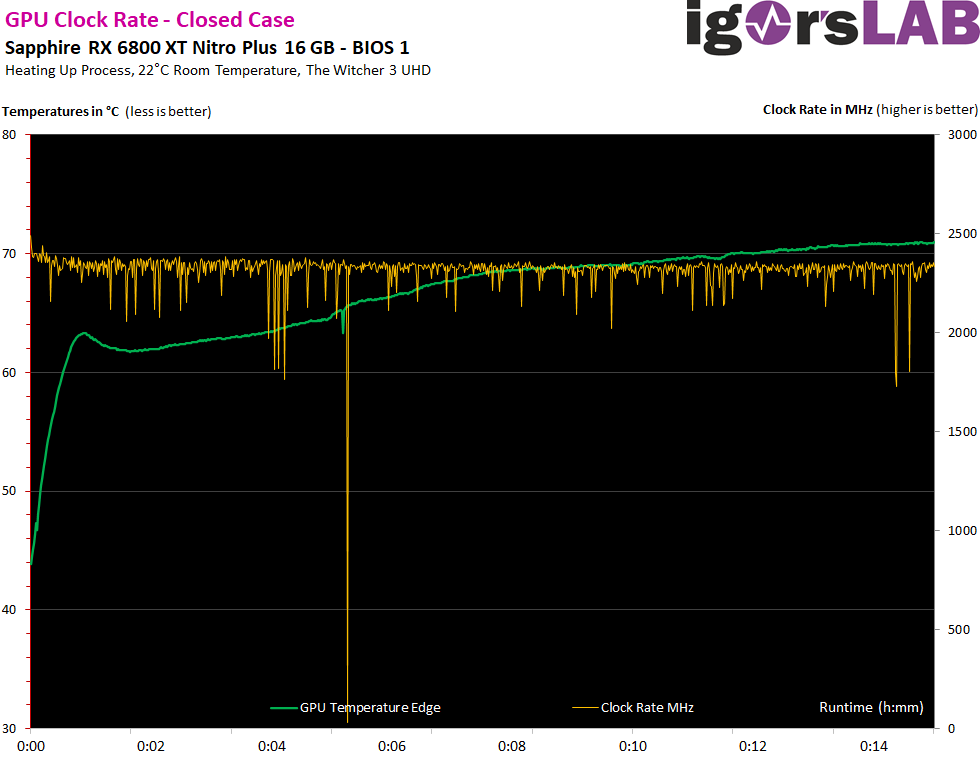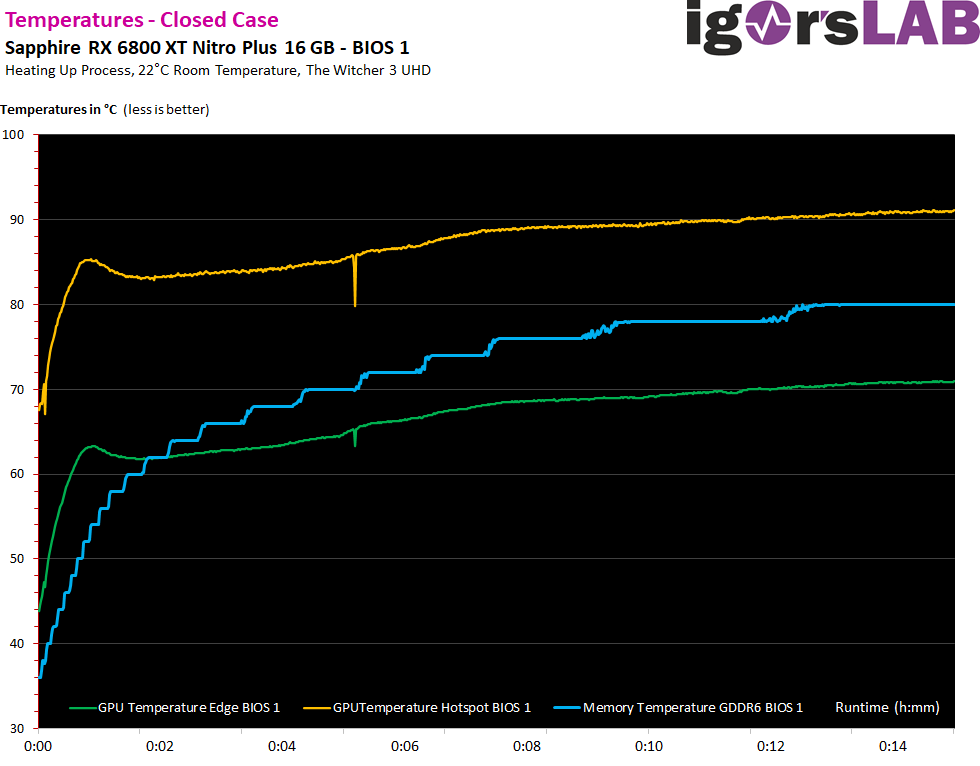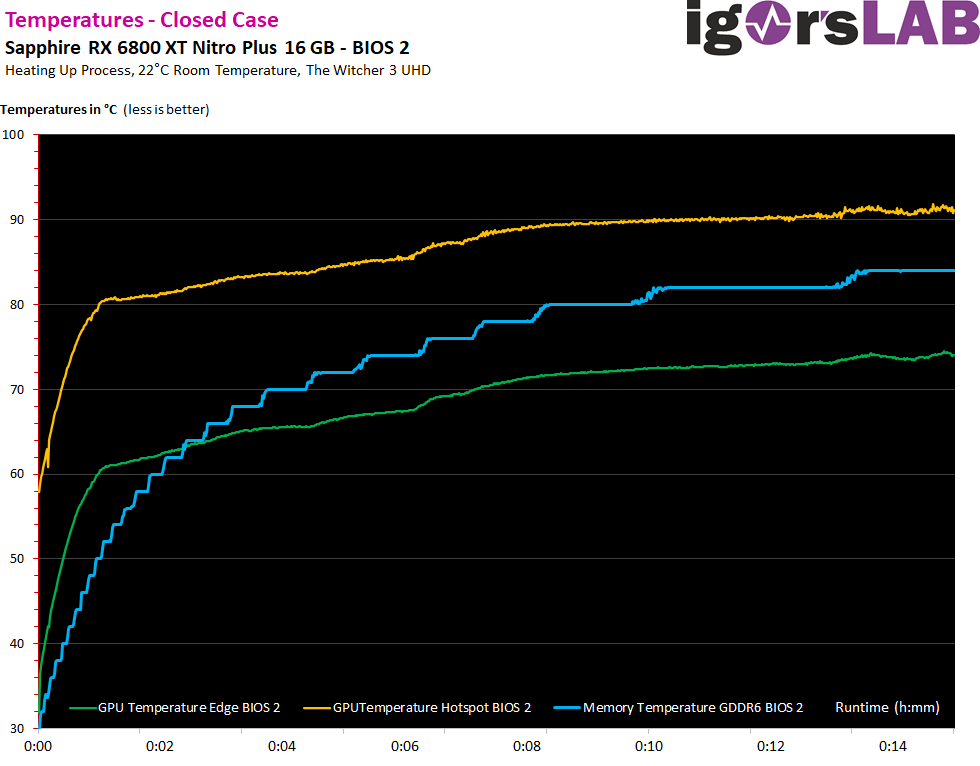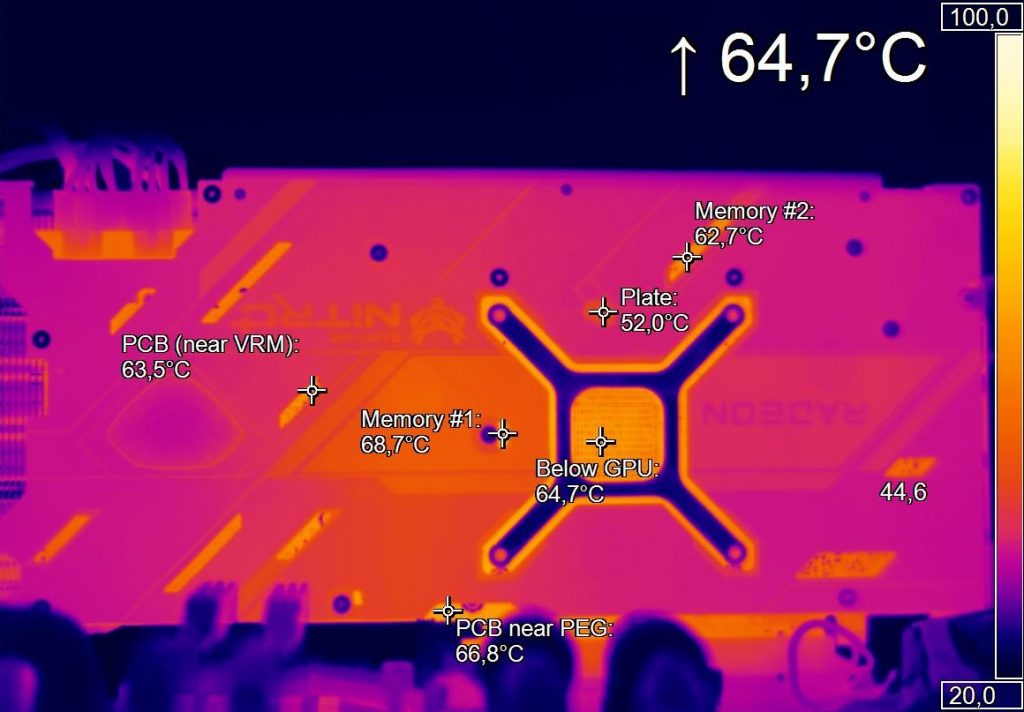Clock rates and overclocking reserves
The one with the beat looks really good. In Full-HD and also in places WQHD the card manages well over 2350 MHz with BIOS 1 and in places this even goes up to about 2450 MHz for a short time. Fully warmed up and in Ultra-HD it’s still between 2340 and 2380 MHz, depending on game and load. If you increase the power limit by the maximum possible 15%, then the clock rate even goes a bit higher, because it stabilizes up to 2600 MHz and even a bit higher, depending on the chip quality. For a short time peaks of just over 2.6 GHz were also visible, but only briefly and only for the gallery. The 400 watts then due are in no relation to the performance, however, since the scaling with the clock decreases more strongly at some point.
The BIOS 2 shows that it can be done in spite of less energy supply. Between 2240 and 2270 MHz are now, which is hardly 100 MHz lower in Ultra-HD, but remains much more frugal. The fact that the temperatures turn out higher is due to the almost silently operating fans, which the BIOS 2 has a different target (see page 1).
GPU and GDDR6 memory temperatures
Now let’s look at the temperatures. AMD still relies on the so-called hotspot temperature internally, but now solves this in a much smarter way with more and cleverly positioned measuring points or sensors. The sum can reach up to 110°C at the peak, but in practice it was only just over 90°C. We’ll remember the kink for the fans in the next chapter. The “GPU diode” (we also know from NVIDIA), which is internally called the Edge temperature by AMD, is clearly below this value.
I was able to read out the GDDR6 with the help of a special engineering tool. It’s interesting that there are even two values per memory module, because the memory also has twice the capacity and apparently outputs two sensors. From these 16 single values the tool then weights the memory temperature, which I have shown you in the graphic. The memory remains, even permanently, inside (substrate) at just over 80 °C (BIOS 1) and below 85 °C (BIOS 2), which is an acceptable temperature. The highest readout values should be generated by the two modules with no fins above their heat sinks. The difference between the individual modules is up to 5 degrees!
This is also impressively proven by the IR images, where I intentionally operated the card with backplate, because I could read the memory (and much more) anyway. The voltage transformers internally return temperatures of not even 75 °C, exemplary.
- 1 - Einführung und technische Details
- 2 - Teardown: Platine, Spannunsversorgung, Kühler
- 3 - Gaming Performance
- 4 - Leistungsaufnahme beim Gaming und Effizienzanalyse
- 5 - Leistungsaufnahme, Spannungen und Normeinhaltung
- 6 - Lastspitzen und Netzteil-Empfehlung
- 7 - Taktraten und Temperaturen
- 8 - Lüfter und Geräuschemission ('Lautsärke')
- 9 - Übersicht, Zusammenfassung und Fazit







































Kommentieren